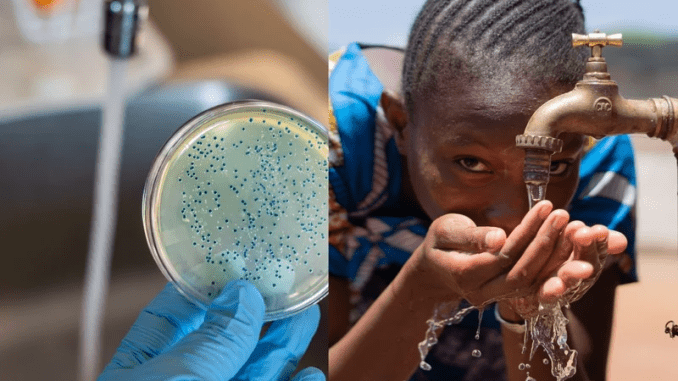
In South Africa, there has been one confirmed case of cholera and twelve confirmed cases overall. This is the most recent.
One fatality and twelve additional confirmed cases of cholera have been reported in South Africa since January, according to the National Department of Health.
Since January, SA has documented over 150 suspected cases of cholera.
Between January 1 and April 18, more than 150 probable cases of cholera were reported in South Africa, according to spokeswoman Foster Mohale.
The bacterial illness cholera is typically transmitted by tainted water.
Dehydration and severe diarrhea are the results. Even in previously healthy individuals, cholera can be lethal in a matter of hours if treatment is not received.
Typically, cholera disperses through contaminated water.
One of these occurrences occurred in Gauteng, and the other eleven were in Limpopo.
“There is no clear history of contact with other confirmed cases; three of these cases are imported from Zimbabwe.”stated Mohale.
The Deceased Individual Was a Citizen of South Africa.
He added that the deceased was a resident of Musina, in the Vhembe District, and that he was 48 years old.
“On March 16, he was brought to the hospital due to symptoms of diarrhea. Regretfully, he died in a Pietersburg hospital on March 21.
According to Mohale, there is still a high danger of both local transmission and imported cases because of cross-border travel to and from Mozambique and Zimbabwe.
“To prevent possible transmission of cholera and other food-borne and water-borne diseases, we appeal to the organizers of social gatherings, including religious and traditional events, to ensure strict compliance with personal hygiene, including hand washing, especially during food preparation and serving, and ablution facilities.”
Important Information About Cholera Prevention:
Use and use safe water; before using it for cooking or drinking, treat or sterilize it.
How water is treated or sterilized
Simmer:
- Boil the water for a minimum of one minute.
- Water may be effectively made safe by boiling it.
Treat:
- 25 liters of water should be mixed with one teaspoon of household bleach.
- One liter of water should include two drops of household bleach.
- Give it a half hour before using.
- Your treated water should always be kept in a sterile, covered container.
Use Soap and Water to Clean Your Hands to Ensure Adequate Hand Hygiene
Before, during, and following meal preparation
Before and following meals or giving your kids something to eat
Following a bathroom visit
Following your child’s underwear cleaning
Following the care of a patient suffering from diarrhea
Ensure to always boil, cook, and peel your food.
Eat Well and Store It Covered
- Consume hot, properly cooked food while it’s still warm.
- Cut up fruits and veggies.
- Make sure to thoroughly cook seafood, particularly shellfish, to a very high temperature.
- Steer clear of unpeeled fruits and uncooked veggies.
Chlorella Bacteria Spread From Contaminated Water Are Used in Toilets.
- To get rid of feces (poop), use restrooms or other sanitary facilities that are safely handled.
- After using the restroom, wash your hands with soap and clean water.
- If a restroom is not available to you:
- Bury your waste after removing it at least 30 meters (98 feet) from any body of water, including wells.
- Avoid using plastic bags in chemical restrooms.
Ensure That Your Surfaces Are Always Clean and Free of Debris.
- Kitchenware and food preparation areas should be cleaned with soapy water.
- Using soap and purified water, clean and disinfect toilets and other poop-contaminated surfaces.
- After cleaning is complete, dispose of dirty rags and soapy water properly.
- After washing and disinfecting, wash your hands once more using soap and safe water.
Leave a Reply